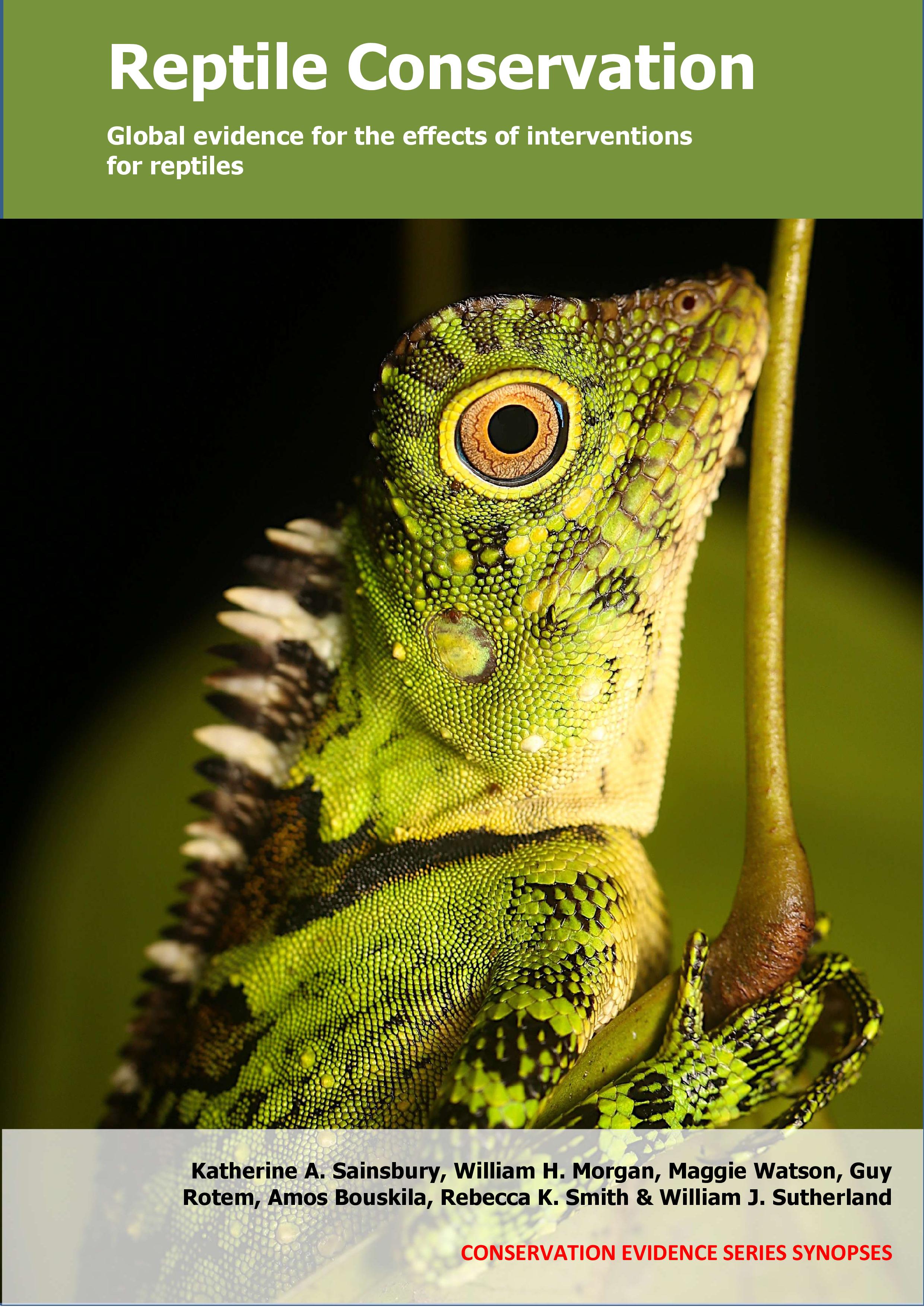Provide supplementary food or water
-
Overall effectiveness category Awaiting assessment
-
Number of studies: 4
View assessment score
Hide assessment score
How is the evidence assessed?
-
Effectiveness
not assessed -
Certainty
not assessed -
Harms
not assessed
Study locations
Supporting evidence from individual studies
A controlled, before-and-after study in 1990–1996 on two tropical islands in Komodo National Park, Indonesia (Walpole 2001) found that providing supplementary food at one location for Komodo dragons Varanus komodoensis resulted in larger numbers at the feeding site, but no evidence of an increase in the total population size. Results were not statistically tested. During four years of supplementary feeding (1990–1993), average daily dragon numbers at the feeding site were 16–19 dragons/day. After feeding ceased, average numbers were 13 in 1994 and six in 1995, by which point they were similar to numbers recorded at baited survey locations across the islands (3–4 dragons/day) in 1993–1995. Goat carcasses were provided two times/week from 1990 to August 1994 at a tourist viewing platform. In addition, the population was censused over 24 hours annually in October by securing a dead goat to permanent plots at 47 locations on Komodo island and 29 locations on Rinca island.
Study and other actions testedA randomized, controlled study in 2002–2003 in one desert site in Arizona, USA (Taylor et al. 2005) found that providing supplementary food for Western diamond-backed rattlesnakes Crotalus atrox resulted in more snakes giving birth and faster growth compared to unfed snakes. More fed snakes reproduced over the 19-month period (7 of 9 snakes; 5 young/litter) than did unfed snakes (1 of 8 snakes; produced 2 young). Fed snakes grew faster than unfed snakes (fed: 0.4 cm/month and 4 cm total growth; unfed: 0.1 cm/month and 1 cm total growth) and gained more mass (fed: 21 g/month; unfed 1 g/month). In general, body condition of fed and unfed snakes was similar, though after giving birth, fed snakes had better body condition (see paper for details). Four measures of above ground activity and home range size were similar for fed and unfed snakes (see paper for details). In March 2002, seventeen wild female snakes were implanted with radio transmitters and released back into the wild. Nine were selected to received supplementary feeding, and eight received no additional food. Fed snakes were offered thawed rodents 1–4 times/week. Snakes were located 1–5 times/week during the active seasons (March–November) and 1–2 times/month during winter (November–March).
Study and other actions testedA replicated, controlled study in 1997–1998 in a site of desert scrub in southern Nevada, USA (Field et al. 2007) found that translocated desert tortoises Gopherus agassizii provided with supplementary water had similar survival but moved more and grew more than non-supplemented tortoises. Mortality rates were similar between supplemented (4 of 15, 27%) and non-supplemented (2 of 13, 15%) translocated tortoises in the year of release. No tortoises died in the second year. Water supplemented tortoises grew more (0.0014 mm/day) and moved longer distances (up to 3,800 m, males only) compared to non-supplemented tortoises (0.007 mm growth/day and 700 m, males only). Released tortoises were held in outdoor pens for two (juveniles) to seven (adults) years, having been removed from areas undergoing urban development. One to two months prior to release, tortoises either received supplementary water (sprinklers on for 15 minutes/day and saucers placed to catch water; 6 females, 8 males, 1 juvenile) or received no water (7 females, 5 males, 1 juvenile). Tortoises were released into artificial burrows in April–May 1997, and the release site was fenced off from a nearby road. Tortoises were relocated by radio-tracking through July 1997 to November 1998.
Study and other actions testedA replicated, controlled, before-and-after study in 2009 in grass, bare ground and tilled soil enclosures in southern Australia (Ebrahimi & Bull 2012) found that translocated pygmy bluetongue lizards Tiliqua adelaidensis provided with supplementary food and artificial burrows were less active, spent less time basking outside of burrows and were observed less in bare ground habitat than unfed lizards. Fed lizards were active for 1.5 hours less each day (4 hours) than unfed lizards (5.5 hrs). Fed lizards spent less time basking at their burrow entrance (19 minutes/hour) compared to unfed lizards (29 minutes/hour). Fed lizards were observed less frequently in bare ground habitat on most days and this effect became larger towards the end of the feeding period (see original paper for details). In total 16 lizards were captured and moved to a trial site in a zoo. Four lizards were released into four 15 m enclosed cages in November 2009. Cages contained short grass, bare ground and tilled soil. Lizards were fed mealworms daily in burrows for seven days in two cages and not fed in the other two cages, then no lizards were fed for two days before the feeding regime began again, but this time the previously unfed cages were fed daily for seven days and the other cages were not. Artificial burrows were built from hollowed wooden poles (30 cm long, 3 cm diameter) pushed into grassy or tilled soil (82 burrows/cage). Lizards were monitored by four surveillance cameras/cage during daylight hours from the second to seventh days of the feeding regime (12 days total).
Study and other actions tested
Where has this evidence come from?
List of journals searched by synopsis
All the journals searched for all synopses
This Action forms part of the Action Synopsis:
Reptile Conservation
Reptile Conservation - Published 2021
Reptile synopsis





)_2023.JPG)














